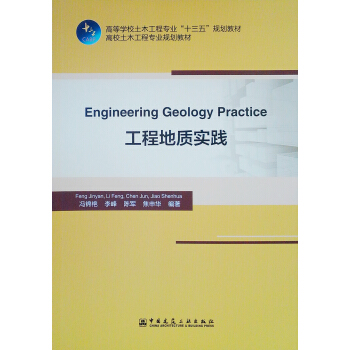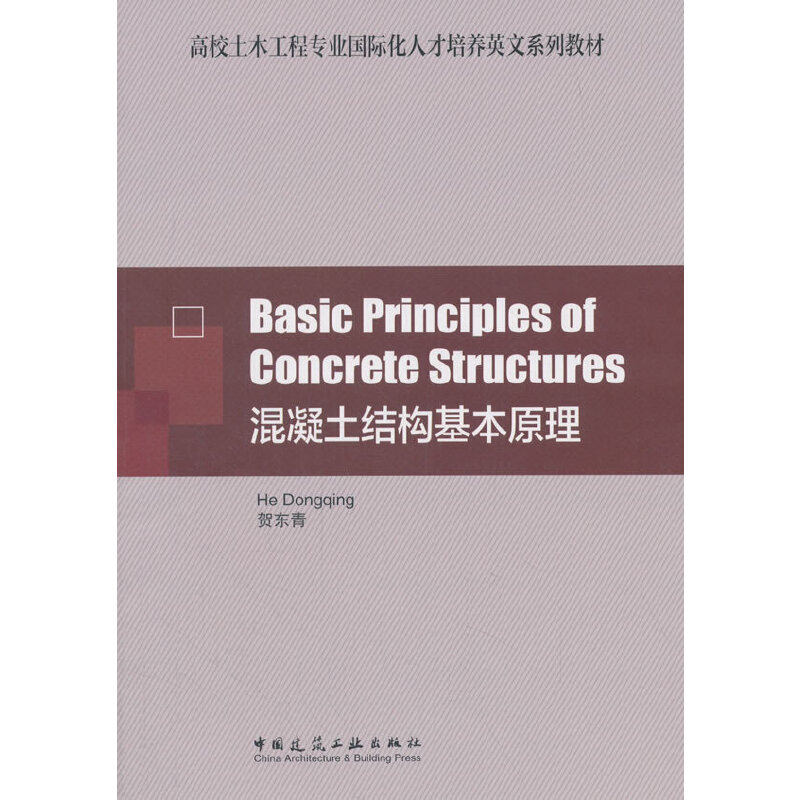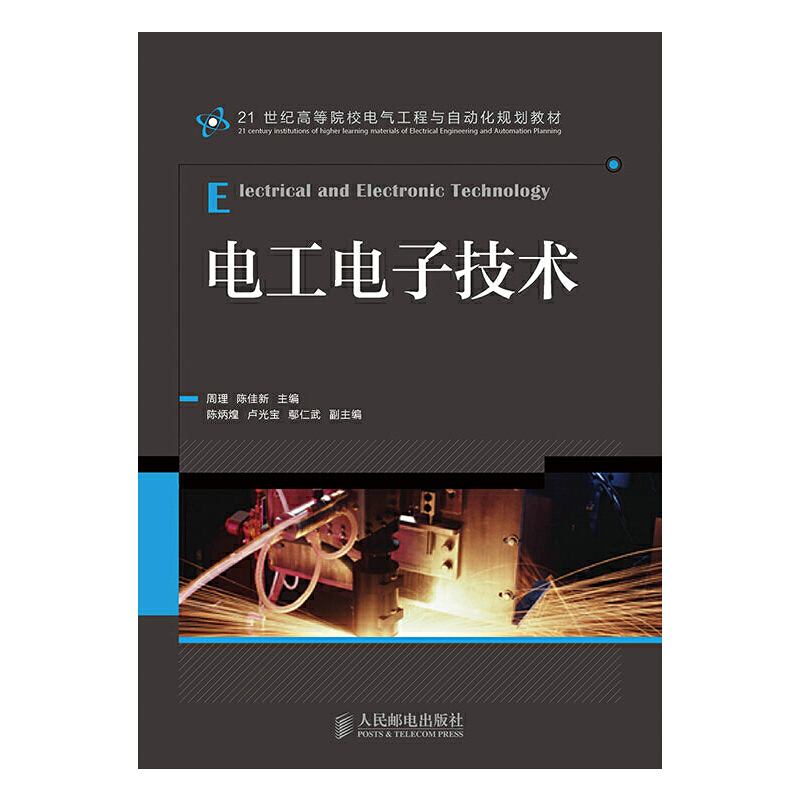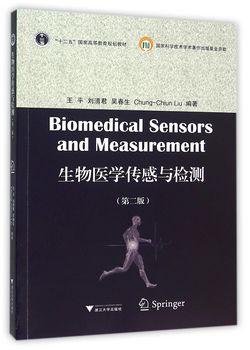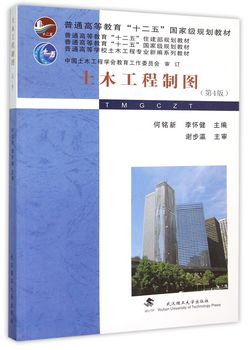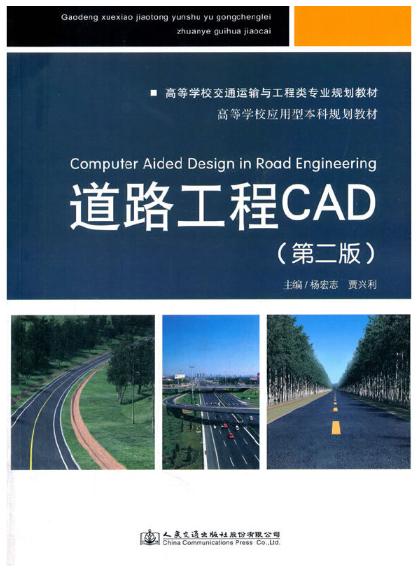工程地质实践 / 高等学校土木工程专业“十三五”规划教材,高校土木工程专业规划教材
定价:¥36.00
作者: 冯锦艳,李峰,陈军,焦申华
出版时间:2019-12
最新印次日期:2019-11
出版社:中国建筑工业出版社
- 中国建筑工业出版社
- 9787112244447
- 1版
- 319720
- 60264661-4
- 平膜
- 16开
- 2019-12
- 207
- 136
- 工学
- 土木类
- P642
- 土木工程
- 本科
内容简介
本书为《工程地质学》配套的实习教材,阐述工程地质学实习的基础内容和基本方法。全书共8章,主要包括造岩矿物与三大类岩石的鉴定、地质罗盘仪的使用、地质构造的野外观察与分析、地质图的使用与阅读、中外关于工程地质的主要差异比较、世界著名地质奇迹赏析以及典型路线的地质实习等。
目录
Chapter 1 Identification of common rock-forming minerals
1.1 Purposes and requirements
1.2 Common tools
1.3 Identification methods of rock-forming minerals
1.4 Practice contents
1.4.1 Morphological observation of mineral monomers
1.4.2 Morphological observation of mineral aggregations
1.4.3 Color observation of minerals
1.4.4 Streak observation of minerals
1.4.5 Gloss observation of minerals
1.4.6 Transparency observation of minerals
1.4.7 Cleavage and fracture observation of minerals
1.4.8 Hardness observation of minerals
1.4.9 Specific gravity observation of minerals
1.4.10 Magnetism observation of minerals
1.4.11 Luminescent observations of minerals
1.4.12 Sensory characteristic observation of minerals
1.4.13 Other characteristics observation of minerals
1.5 Internship report
1.6 Thinking questions
Chapter 2 Rock identification
2.1 Purposes and requirements
2.2 Common tools
2.3 Identification method
2.3.1 Texture differences of three kinds of rocks
2.3.2 Structure differences of three kinds of rocks
2.4 Identification of igneous rocks
2.4.1 Classification of igneous rocks
2.4.2 Color of igneous rock
2.4.3 Mineral composition of igneous rock
2.4.4 Texture and structure of igneous rock
2.4.5 To name igneous rock
2.4.6 The characteristics of common igneous rock
2.4.7 Identification method of igneous rocks by naked eyes
2.4.8 An identification example of igneous rock
2.5 Identification of sedimentary rock
2.5.1 Color of sedimentary rock
2.5.2 Material composition of sedimentary rock
2.5.3 Texture of sedimentary rock
2.5.4 Structure of sedimentary rock
2.5.5 To name the sedimentary rock
2.5.6 Characteristics of common sedimentary rock
2.5.7 Identification method of sedimentary rocks by naked eyes ~
2.6 Identification of metamorphic rock
2.6.1 Classification of metamorphism
2.6.2 Mineral composition of metamorphic rock
2.6.3 Texture of metamorphic rock
2.6.4 Structure of metamorphic rock
2.6.5 To name the metamorphic rock
2.6.6 Classification of metamorphic rocks
2.6.7 Characteristics of common metamorphic rocks
2.6.8 Identification method of metamorphic rocks
2.7 The basic identification method of three kinds of rocks in the field
2.8 Internship report
2.9 Thinking questions
Chapter 3 Use of geological compass instrument
3.1 Structure of geological compass instrument
3.1.1 Compass
3.1.2 Tilt meter
3.2 Use method of geological compass instrument
3.2.1 Declination correction
3.2.2 Azimuth measurement steps
3.2.3 Compass use precautions
3.3 Strata attitude measurement
3.3.1 Determination of the strike direction of strata
3.3.2 Determination of the dip direction of strata
3.3.3 Determination of dip angle of strata
3.3.4 Attitude measurement at steep slope
3.3.5 Attitude representation method
3.4 Internship report
3.5 Thinking questions
Chapter 4 Field observation and analysis of geological structure
4.1 Field observation of uniclinal structure
4.2 Field observation of fold structure
4.3 Field observation of fault
4.3.1 Field identification of fault
4.3.2 Field characteristics of fault
4.3.3 Motions direction determination of the two walls of fault
4.3.4 Scale observation of faults
4.4 Field survey and statistics of joints
4.4.1 Strike direction rosette of Joint
4.4.2 Dip direction rosset of joint
4.5 Practice content
Chapter 5 Topographic map and geological map
5.1 Topographic map
5.1.1 Scale of topographic map
5.1.2 Contour lines
5.1.3 Features of all kind of terrain
5.1.4 Ground features symbols
5.1.5 How to read the topographic map
5.2 Application of topographic map
1.1 Purposes and requirements
1.2 Common tools
1.3 Identification methods of rock-forming minerals
1.4 Practice contents
1.4.1 Morphological observation of mineral monomers
1.4.2 Morphological observation of mineral aggregations
1.4.3 Color observation of minerals
1.4.4 Streak observation of minerals
1.4.5 Gloss observation of minerals
1.4.6 Transparency observation of minerals
1.4.7 Cleavage and fracture observation of minerals
1.4.8 Hardness observation of minerals
1.4.9 Specific gravity observation of minerals
1.4.10 Magnetism observation of minerals
1.4.11 Luminescent observations of minerals
1.4.12 Sensory characteristic observation of minerals
1.4.13 Other characteristics observation of minerals
1.5 Internship report
1.6 Thinking questions
Chapter 2 Rock identification
2.1 Purposes and requirements
2.2 Common tools
2.3 Identification method
2.3.1 Texture differences of three kinds of rocks
2.3.2 Structure differences of three kinds of rocks
2.4 Identification of igneous rocks
2.4.1 Classification of igneous rocks
2.4.2 Color of igneous rock
2.4.3 Mineral composition of igneous rock
2.4.4 Texture and structure of igneous rock
2.4.5 To name igneous rock
2.4.6 The characteristics of common igneous rock
2.4.7 Identification method of igneous rocks by naked eyes
2.4.8 An identification example of igneous rock
2.5 Identification of sedimentary rock
2.5.1 Color of sedimentary rock
2.5.2 Material composition of sedimentary rock
2.5.3 Texture of sedimentary rock
2.5.4 Structure of sedimentary rock
2.5.5 To name the sedimentary rock
2.5.6 Characteristics of common sedimentary rock
2.5.7 Identification method of sedimentary rocks by naked eyes ~
2.6 Identification of metamorphic rock
2.6.1 Classification of metamorphism
2.6.2 Mineral composition of metamorphic rock
2.6.3 Texture of metamorphic rock
2.6.4 Structure of metamorphic rock
2.6.5 To name the metamorphic rock
2.6.6 Classification of metamorphic rocks
2.6.7 Characteristics of common metamorphic rocks
2.6.8 Identification method of metamorphic rocks
2.7 The basic identification method of three kinds of rocks in the field
2.8 Internship report
2.9 Thinking questions
Chapter 3 Use of geological compass instrument
3.1 Structure of geological compass instrument
3.1.1 Compass
3.1.2 Tilt meter
3.2 Use method of geological compass instrument
3.2.1 Declination correction
3.2.2 Azimuth measurement steps
3.2.3 Compass use precautions
3.3 Strata attitude measurement
3.3.1 Determination of the strike direction of strata
3.3.2 Determination of the dip direction of strata
3.3.3 Determination of dip angle of strata
3.3.4 Attitude measurement at steep slope
3.3.5 Attitude representation method
3.4 Internship report
3.5 Thinking questions
Chapter 4 Field observation and analysis of geological structure
4.1 Field observation of uniclinal structure
4.2 Field observation of fold structure
4.3 Field observation of fault
4.3.1 Field identification of fault
4.3.2 Field characteristics of fault
4.3.3 Motions direction determination of the two walls of fault
4.3.4 Scale observation of faults
4.4 Field survey and statistics of joints
4.4.1 Strike direction rosette of Joint
4.4.2 Dip direction rosset of joint
4.5 Practice content
Chapter 5 Topographic map and geological map
5.1 Topographic map
5.1.1 Scale of topographic map
5.1.2 Contour lines
5.1.3 Features of all kind of terrain
5.1.4 Ground features symbols
5.1.5 How to read the topographic map
5.2 Application of topographic map

